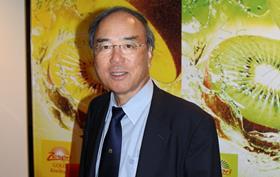
Kiwifruit consumption per household continues to grow in Japan despite higher selling prices and an overall downward trend in fruit consumption.
The latest figures from Japan’s Ministry of Finance show fruit consumption during August was the third lowest for that month in 14 years at 7.10kg per household, with purchasing price the second highest for August at ¥552 per kg, second only to the purchasing prices in August 2015.
“It goes without saying that asthepurchasing price goes up, consumption goes down. This has been an ongoing trend,” said Jack Moriya, president of leading Japanese importer Tokyo Seika.
“We see the sametrend for bananaswith expenditure, consumption and purchasingprice as we dowith total fruit. Banana expenditure represented 9.9 per cent of total fruit expenditure, with consumption at 19 per cent and purchasingprice at 5 per cent.”
Kiwifruit and table grapes continue to buck the trend, with kiwifruit expenditure reaching ¥179 per household for August, above the 12-year average of ¥106, while consumption reached a record high of 217gm per household, above the 12-year average of 134gm.
“Although thepurchasing price [for kiwifruit] was the second highest it has even been [in August], it did not have a negative impact on consumption as it did with other fruit,” Moriya said.“This summer saw extremely hot weather, which would normallyimpactnegatively on kiwifruit consumption but that has not been the case this summer.It's rather amazing and the quality and condition of the kiwifruit has been good.”
Orange and grapefruit consumption continues to decline, with grapefruit consumption and expenditure per household in 2016 some of the lowest recorded since 2004.
“Oranges, like grapefruit, has been on a downward trend for years in terms of expenditure and consumption, but this year there was a uptick in July,” Moriya explained. “While the purchasing price for March and May were the highest recorded in the past twelve years, prices were down for most of 2016 versus 2015.”






No comments yet